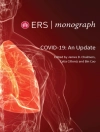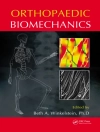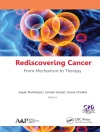Principles and Practice of Pediatric Neurosurgery, Third Edition is a completely revised edition of the most authoritative guide to the management of pediatric neurosurgical disorders encountered in clinical practice. Written by leaders in the field, it provides pediatric neurosurgeons with a clear understanding of the current standards of practice and treatment in the subspecialty.
Key Features:
- Now in full color, with more than 1, 000 images
- An increased emphasis on clinical management strategies in pediatric neurosurgery
- Seven new chapter topics, including cellular therapy for pediatric neurosurgical disease, conjoined twins, lipomeningoceles, and skeletal syndromes
- Pearls and pitfalls in every chapter
This book is an essential reference for all residents and practitioners in pediatric neurosurgery and pediatric neurology.
สารบัญ
<p><strong>General Topics</strong><br>1. The History of Pediatric Neurosurgery<br>2. Normal and Abnormal Development of the Nervous System<br>3. Neurologic Examination of the Newborn, Infant, and Child<br>4. Caring for the Pediatric Neurosurgical Patient<br>5. Pediatric Neurosurgery in Developing Countries<br>6. Ethical Issues in Pediatric Neurosurgery<br>7. Applications of Cellular Therapy in Pediatric Neurosurgery<br><strong>Congenital and Developmental Cerebral Disorders</strong><br>8. Neurogenetic Basis of Pediatric Neurosurgical Conditions<br>9. Hydrocephalus<br>10. Treatment of Hydrocephalus with Shunts<br>11. Neuroendoscopy<br>12. Intraventricular Hemorrhage and Post-Hemorrhagic Hydrocephalus<br>13. The Dandy-Walker Complex and Arachnoid Cysts<br>14. Extracerebral Fluid Collections in Infants<br>15. Congenital Intracranial Malformations<br>16. Chiari Malformations<br>17. Encephaloceles, Meningoceles, and Dermal Sinuses<br>18. Congenital Lesions of the Scalp and Skull<br>19. Craniosynostosis<br>20. Craniofacial Syndromes<br>21. Craniopagus Twins<br><strong>Congenital and Developmental Spine Disorders</strong><br>22. Open Fetal Surgery for Myelomeningocele<br>23. Spinal Meningoceles<br>24. Myelomeningocele<br>25. Occult Spinal Dysraphism<br>26. Surgical Management of Complex Spinal Cord Lipomas<br>27. Craniovertebral Junction<br>28. Congenital Intraspinal Cysts<br>29. Congenital Vertebral Anomalies<br>30. Skeletal Syndromes<br>31. Syringomyelia and Hydromyelia<br><strong>Neoplasms</strong><br>32. Scalp and Skull Neoplasms<br>33. Brain Tumors in the First Two Years of Life<br>34. Supratentorial Hemispheric Gliomas<br>35. Supratentorial Nonglial Hemispheric Neoplasms<br>36. Optic Pathway Gliomas<br>37. Craniopharyngiomas<br>38. Pediatric Pituitary Adenomas<br>39. Pineal Region Tumors<br>40. Medulloblastomas<br>41. Ependymomas<br>42. Brainstem Gliomas<br>43. Cerebellar Astrocytomas<br>44. Skull Base Tumors<br>45. Spinal Extradural Neoplasms and Intradural Extramedullary Neoplasms<br>46. Intramedullary Spinal Cord Tumors<br>47. Spine Tumors<br>48. Neurofibromatosis 1 and 2<br>49. The Phakomatoses<br>50. Chemotherapy and Biologic Therapy for Pediatric Brain Tumors<br>51. Radiotherapy of Pediatric Brain Tumors<br><strong>Trauma</strong><br>52. Nonaccidental Head Injuries<br>53. Accidental Head Injuries in Children<br>54. Penetrating Craniocerebral Injuries<br>55. Intracranial and Extracranial Hematomas in Children<br>56. Traumatic Brain Injury in Children: Critical Care Management<br>57. Rehabilitation and Outcome of Head Injuries<br>58. Cranioplasty<br>59. Pediatric Brachial Plexus Palsy<br>60. Principles of Pediatric Spinal Column Trauma<br>61. Specific Injury Patterns and Treatment of Pediatric Spinal Column Trauma<br>62. Spinal Cord Injury<br>63. Intervertebral Disk Disease<br><strong>Cerebrovascular Disease</strong><br>64. Cavernous and Venous Malformations<br>65. Moyamoya Disease<br>66. Intracerebral Aneurysms<br>67. Pediatric Arteriovenous Malformations<br>68. Radiosurgical Management of Cerebrovascular Malformations in Children<br>69. Vein of Galen Aneurysmal Malformation<br>70. Pediatric Spinal Vascular Malformations<br><strong>Functional Disorders</strong><br>71. Evaluation of Intractable Epilepsy in Children<br>72. Temporal Lobe Epilepsy<br>73. Extratemporal Epilepsy Surgery<br>74. Nonresective and Neuromodulatory Treatments of Refractory Epilepsy<br>75. Hemispherectomy<br>76. Spasticity and Movement Disorders<br><strong>Infectious Disorders</strong><br>77. Shunt Infections<br>78. Cranial Epidural Abscess and Subdural Empyema<br>79. Brain Abscess and Encephalitis<br>80. Tuberculosis, Parasitic Infestations, and Fungal Infections<br>81. Infections of the Spinal Axis<br><strong>Neuroanesthesia</strong><br>82. Pediatric Neuroanesthesia</p>












